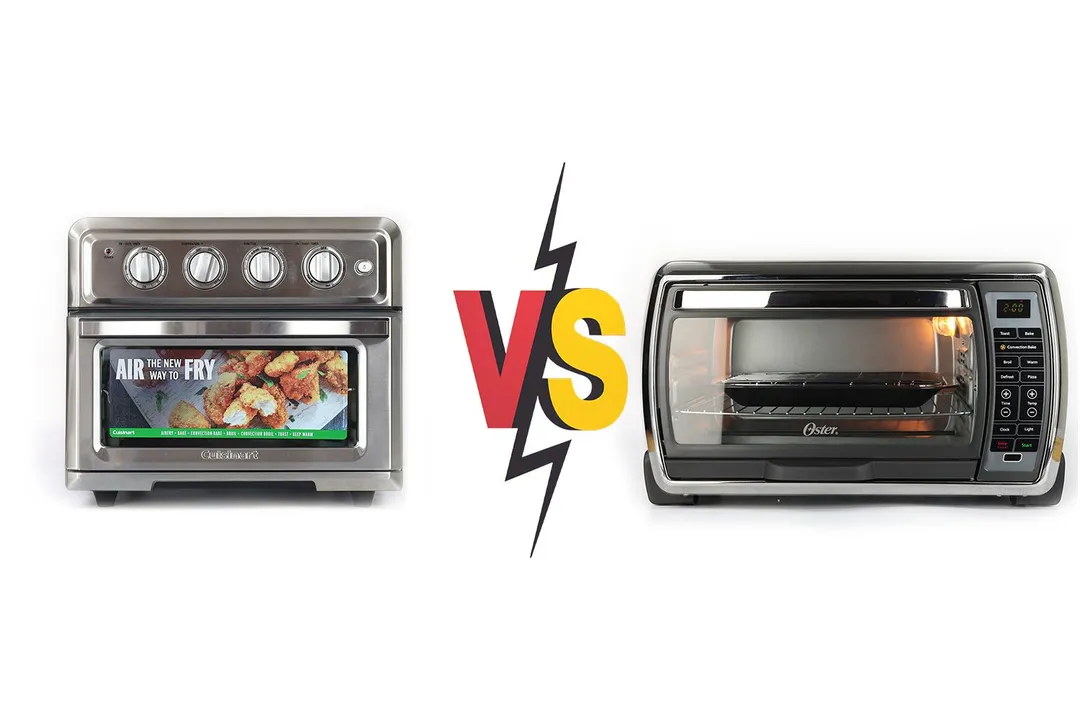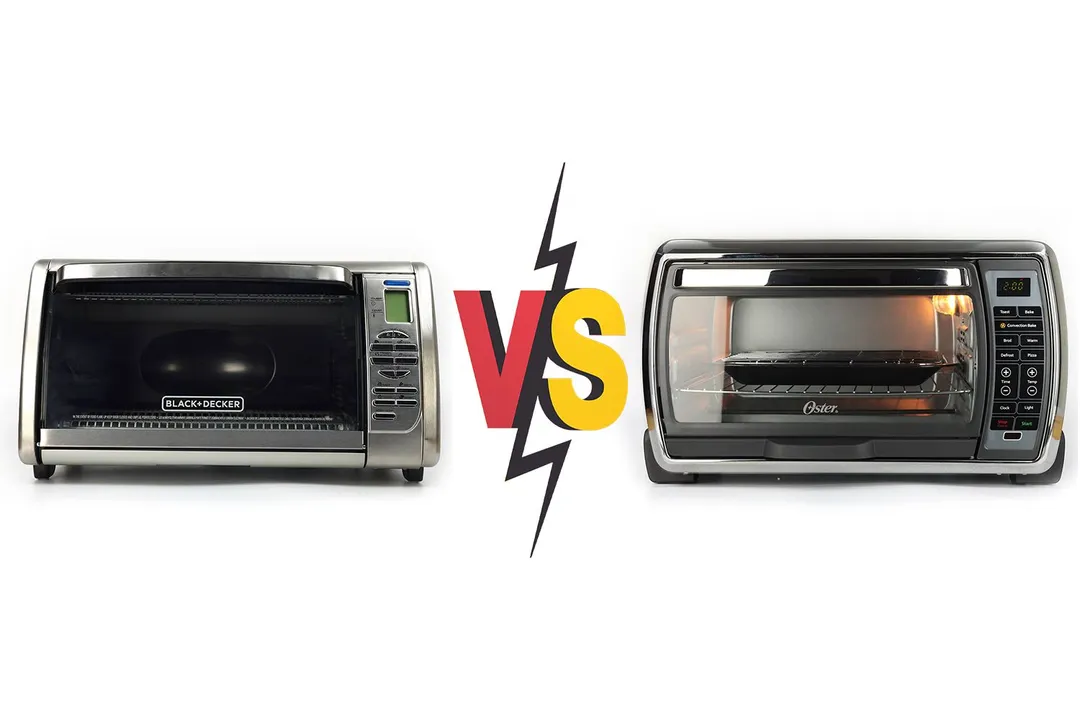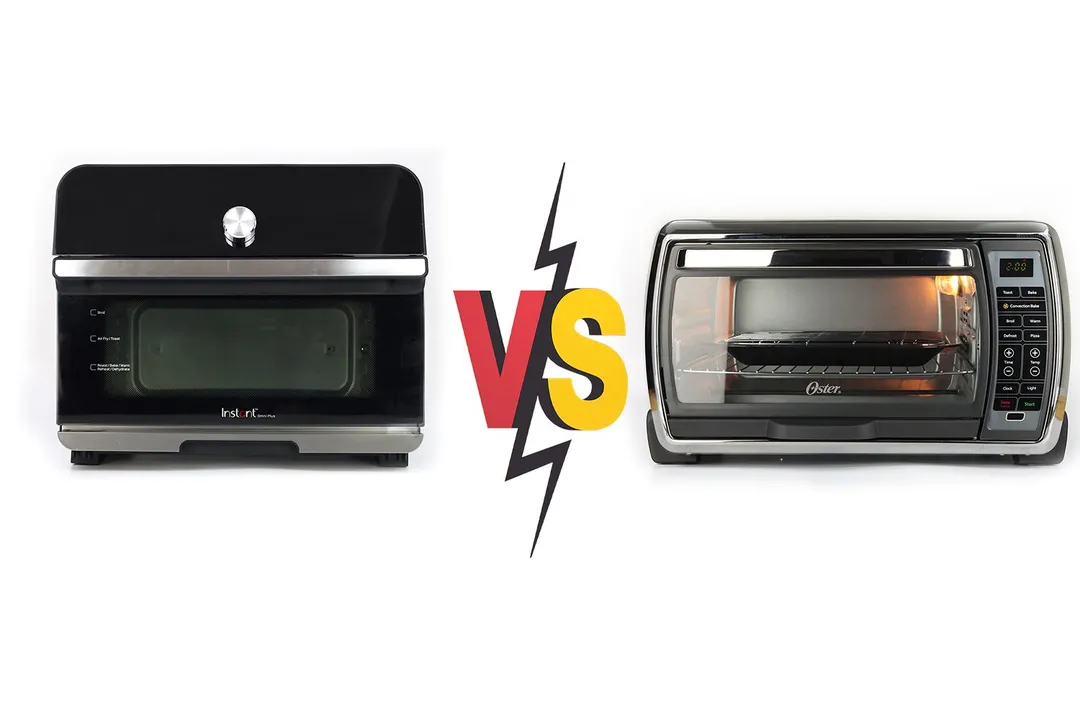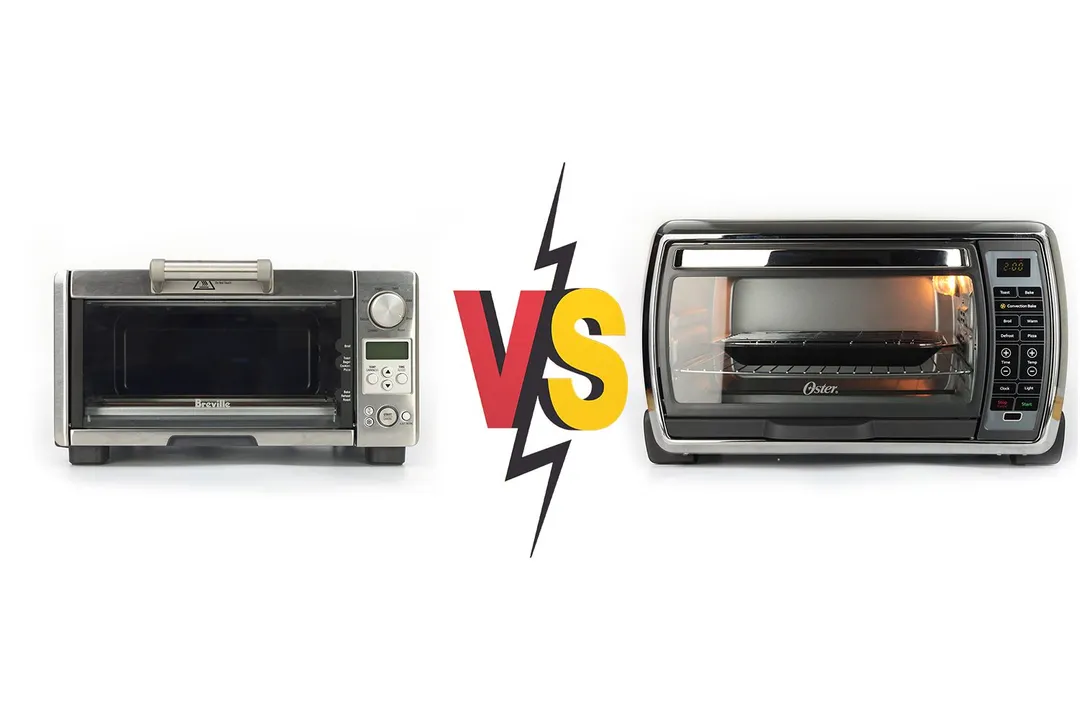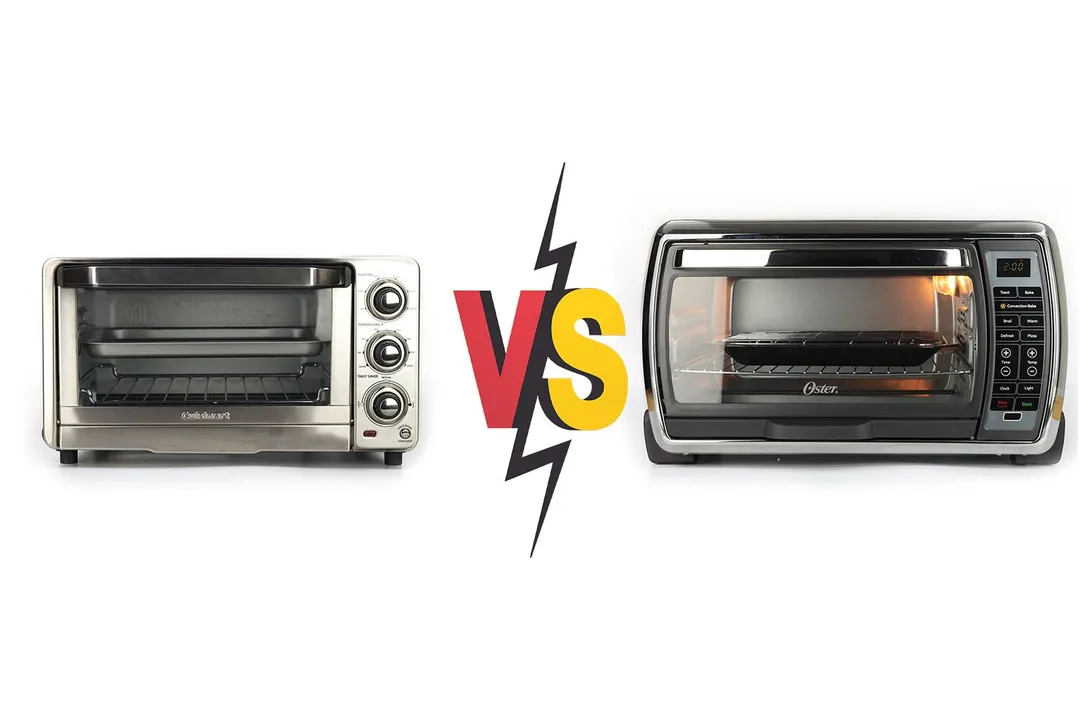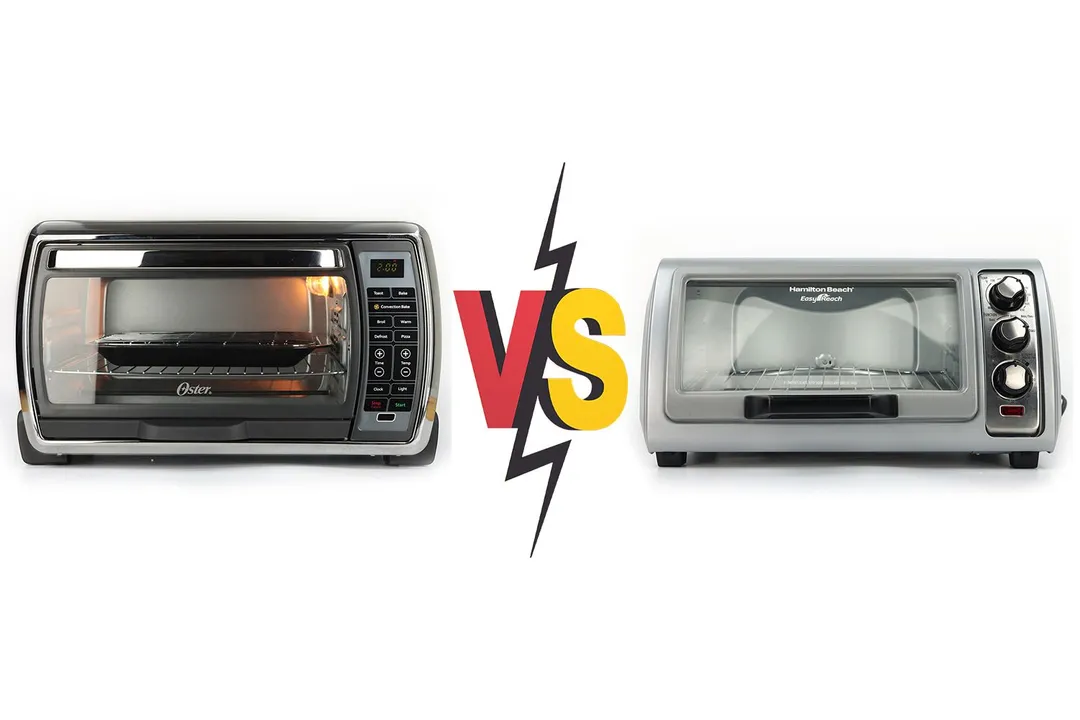Our recommendations are made independently through Research & Testing. We may receive commissions from purchases made via our links.
Oster French Door vs Oster 6 Slice Convection Toaster Oven Side-by-Side Comparison
Oster French Door
Tested Using Methodology v1.0Oster 6 Slice Convection Oven
Tested Using Methodology v1.0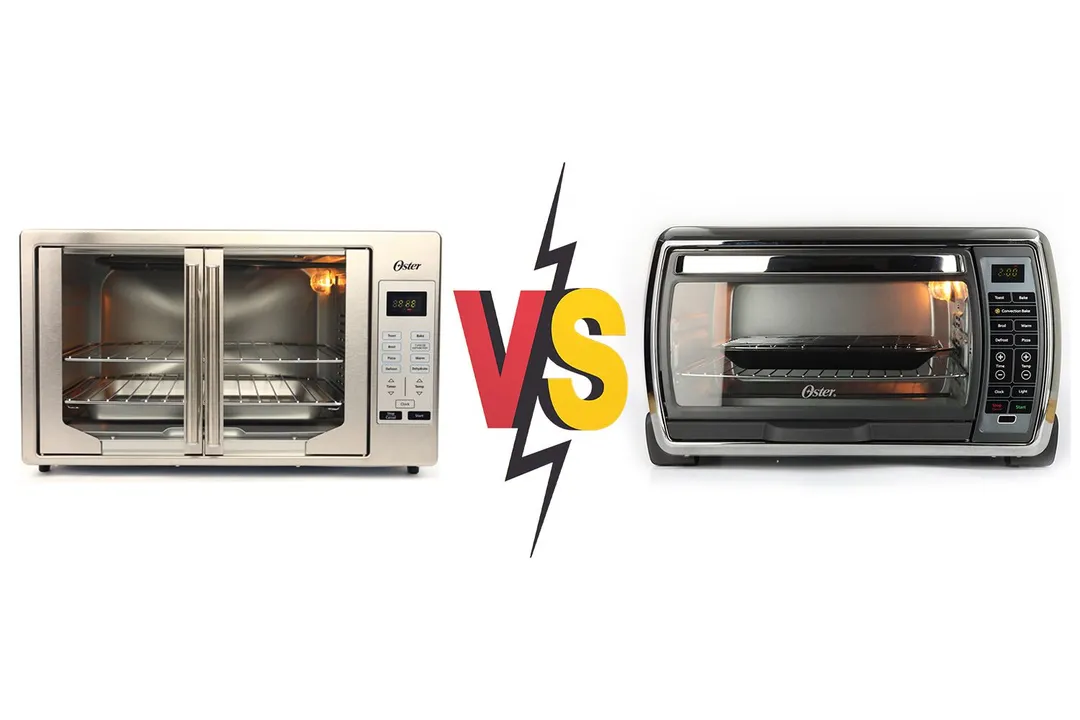
Overall Verdict
Not only do they share the same brand, the Oster French Door (TSSTTVFDDG) and the Oster 6 Slice (TSSTTVMNDG-SHP-2) are also both large digital convection toaster ovens. After we examined the most minute details, the slightly smaller Oster 6 Slice wins by a hair’s breadth. On a side note, the 6 Slice is also much cheaper.
The two toaster ovens have a similar number of design features but the Oster French Door stands out more and has slightly higher scores. The oven has a sleek brushed stainless steel design and a unique French door to separate it from the more common look of the 6 Slice.
However, the build does make the Oster TSSTTVFDDG harder to carry, especially when it doesn’t have carrying handles like the TSSTTVMNDG-SHP-2. Moreover, even though it has the largest cooking chamber among our tested toaster ovens, it only has two rack positions, not enough to make full use of the space.
The two are similar in terms of usability as well. Their control panels are of similar quality although the Oster French Door’s is more aesthetic. The Oster 6 Slice won because it was easier to clean, especially its guide rails and baking pan.
Performance was the decisive winning factor for the Oster 6 Slice. Despite its lower power draw, it had higher scores in almost all of our tests, including toasting bread, baking pizza, and fries, only losing slightly in roasting whole chicken. We suspected the Oster French Door isn’t powerful enough to accommodate such a large cooking space.
Pros & Cons
- Large capacity
- Interior lighting available
- Easy-to-clean stainless steel exterior
- Sturdy build
- Air-ventilation holes on all sides
- Cool-touch door handles
- Convenient slide-out crumb tray
- Large capacity
- Easy-to-clean stainless steel exterior
- Cool-touch door handle
- Convenient slide-out crumb tray
- High-contrast digital display
- Internal lighting available
- Extra functions
- No convection toggle
- Buttons not reliably responsive
- Not very budget-friendly
- Convection fan isn’t all-applicable
- No safety mechanism for the door
- Buttons not reliably responsive
Key Specs
Where to Buy
*You help support HealthyKitchen101's product testing and reviews by purchasing from our retail partners.
Analysis and Test Results
Performance
Toast
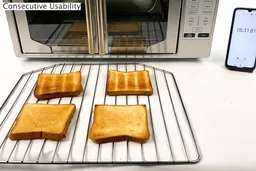
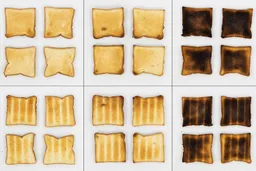
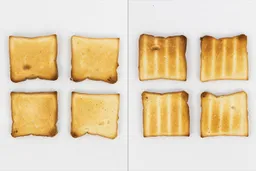
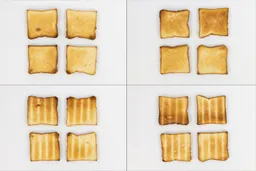
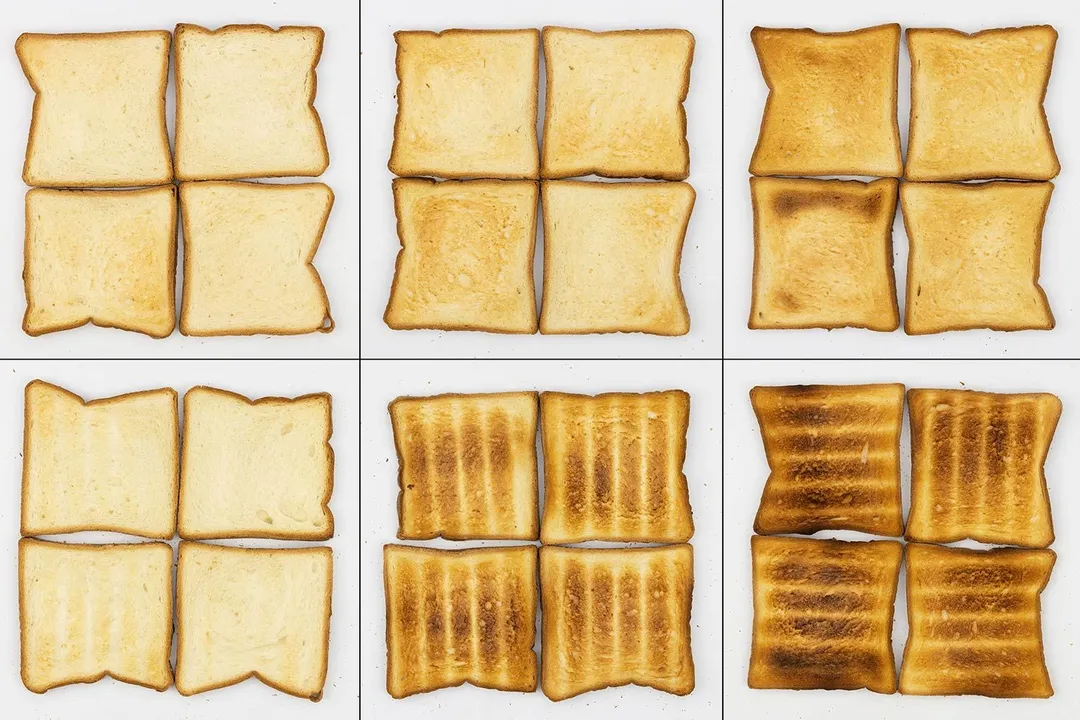
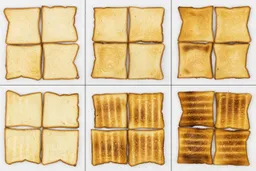
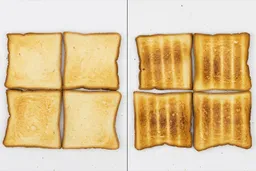
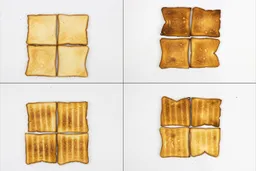
Pizza
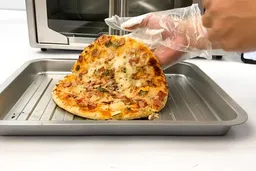
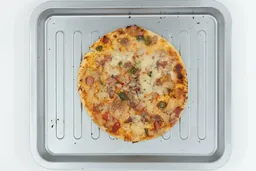

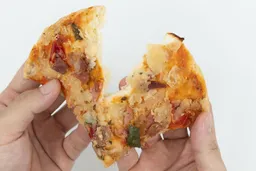
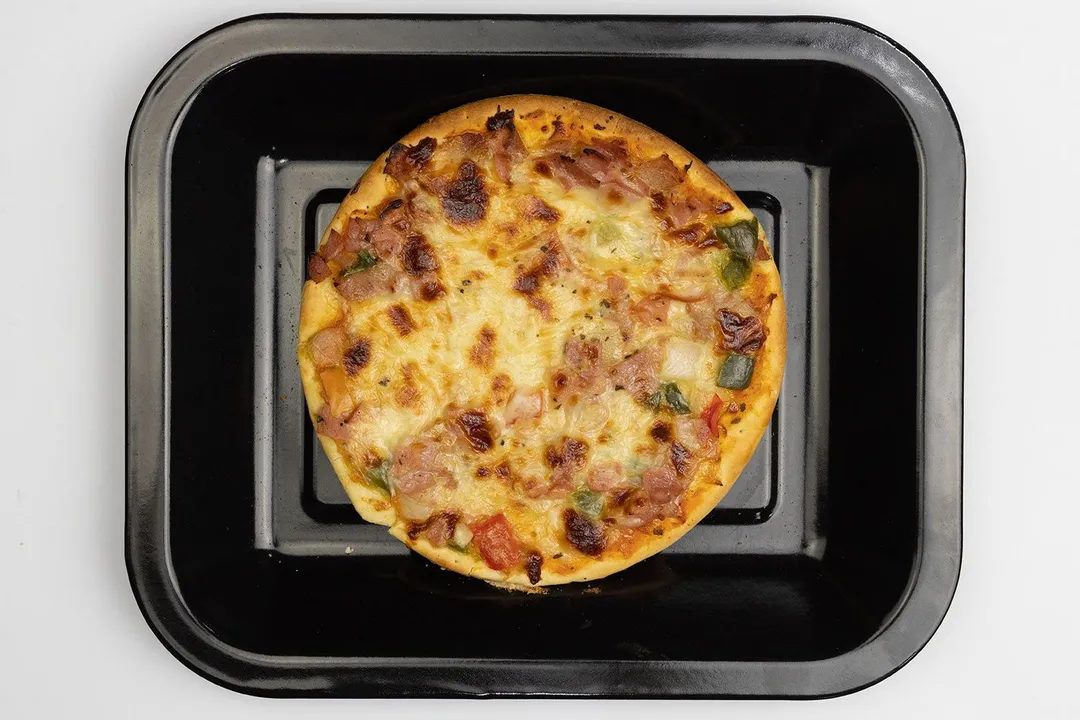
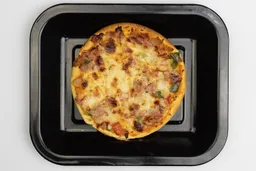
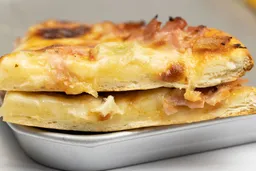

Whole Roasted Chicken
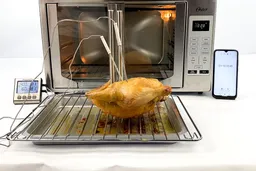
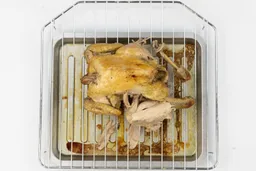
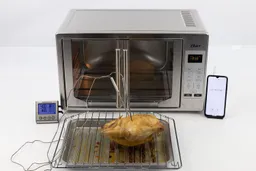

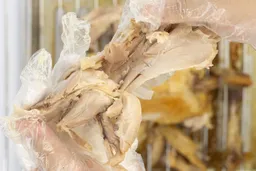
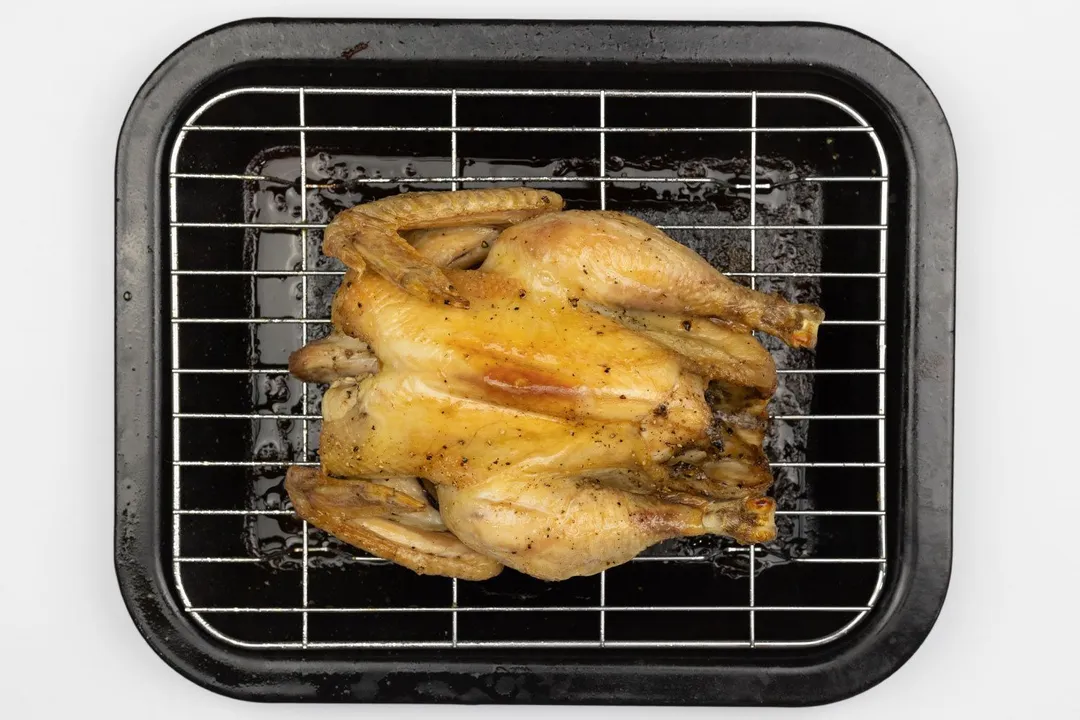
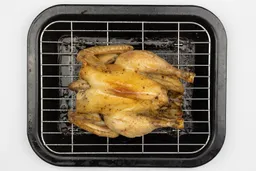
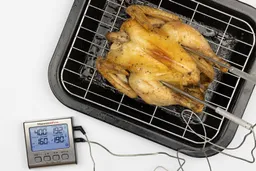
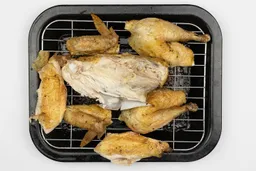
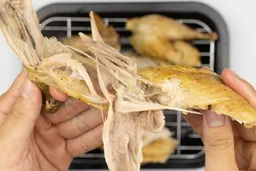
Baked French Fries
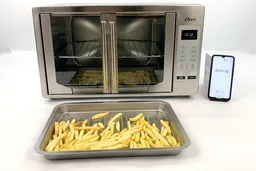
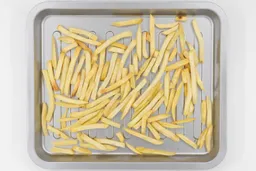


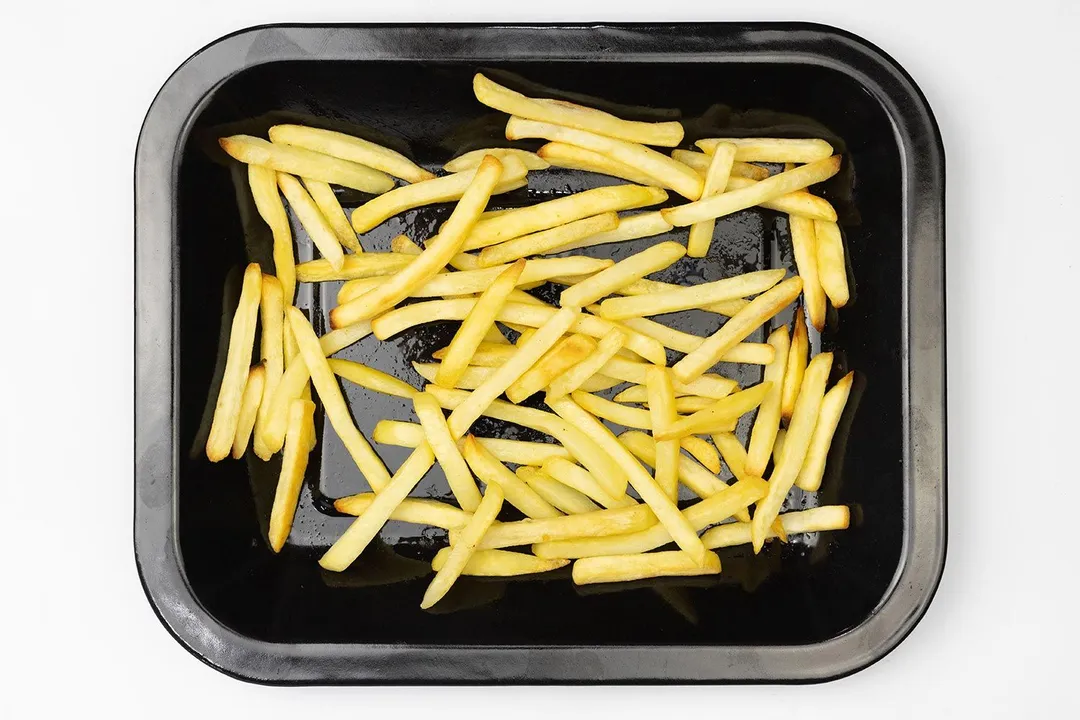
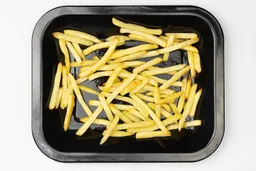

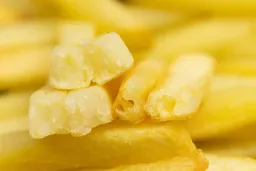
Design
In the Box
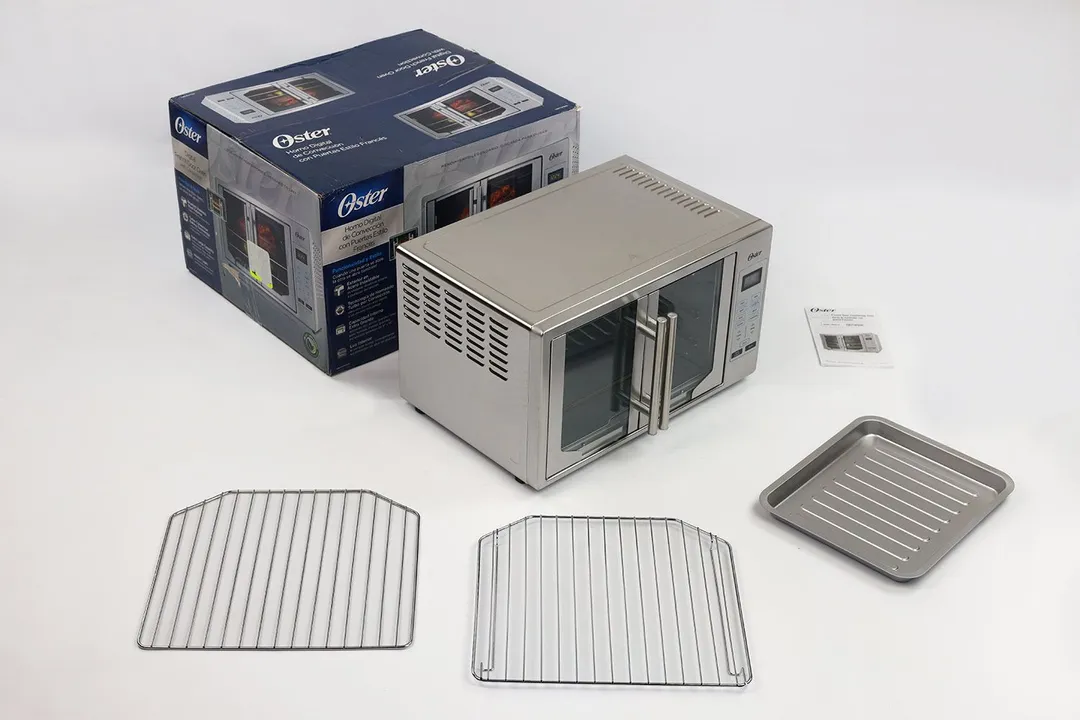
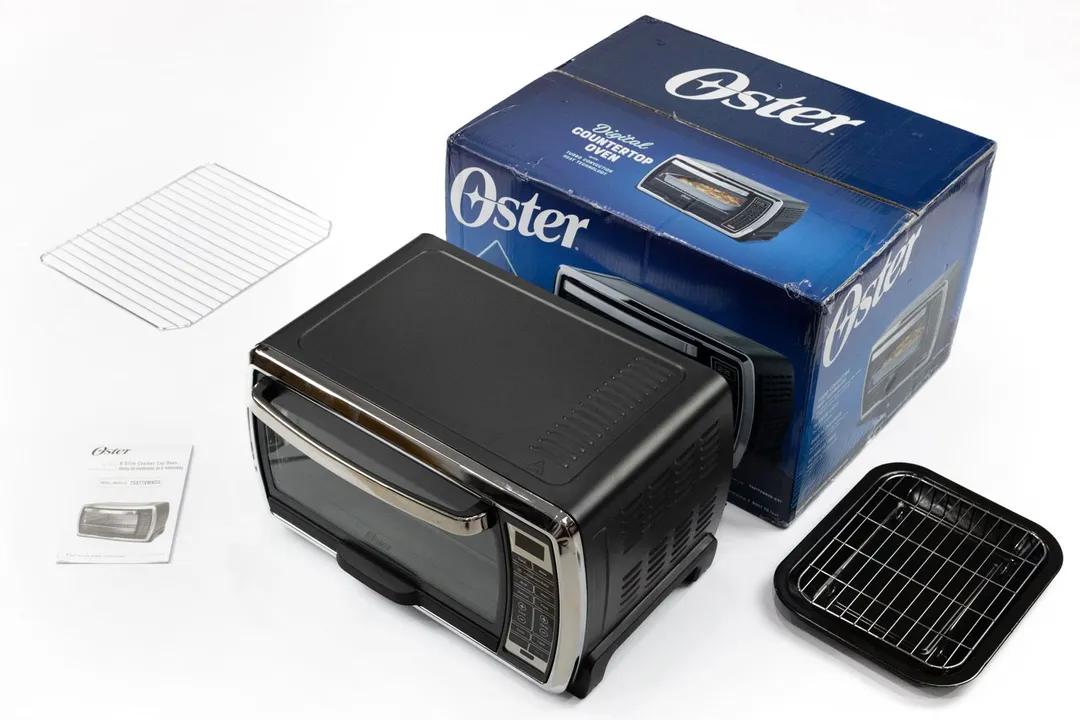
Exterior
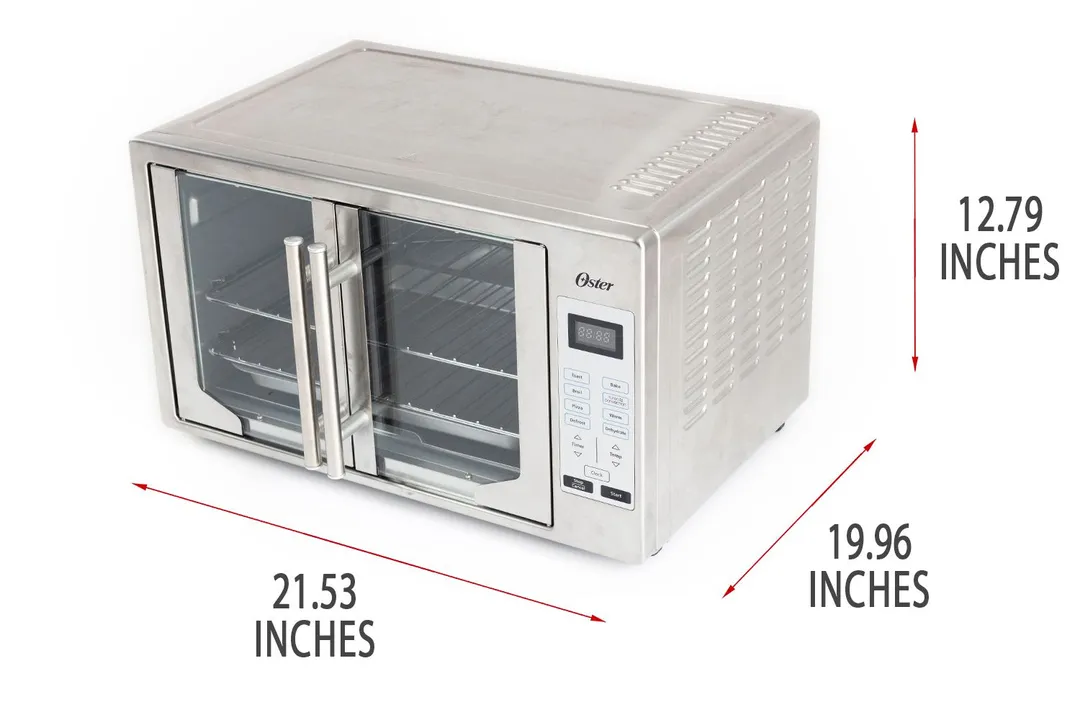
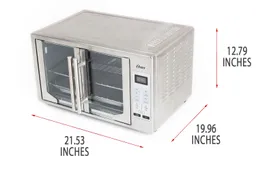
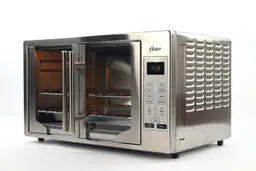
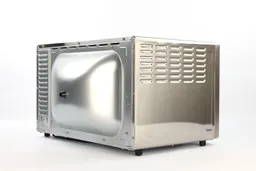
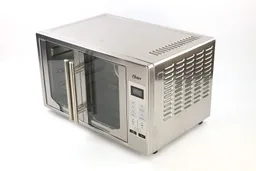
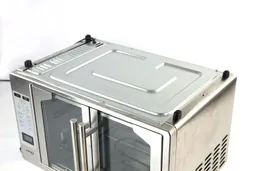
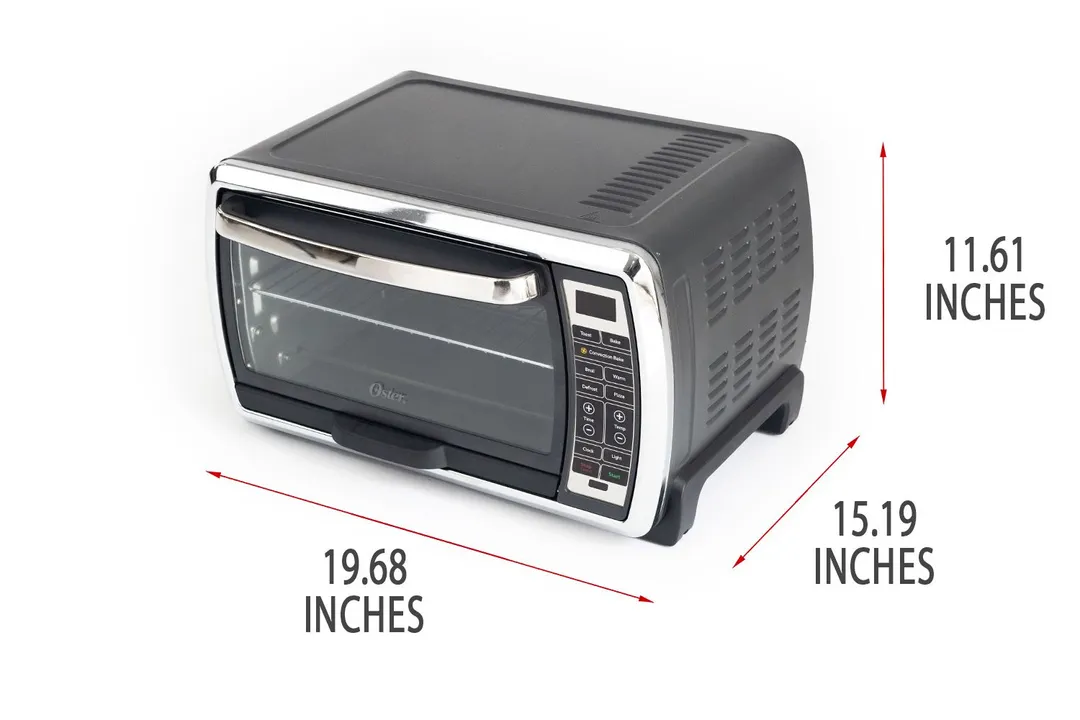
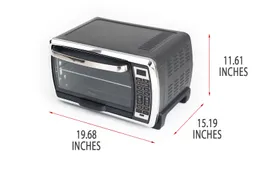
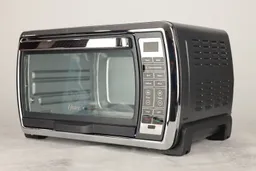
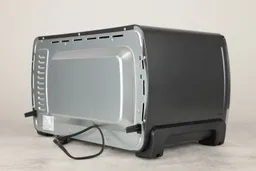
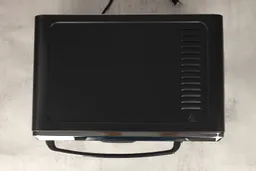
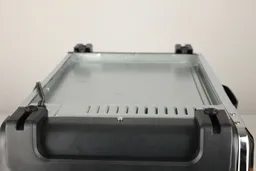
Control Panel
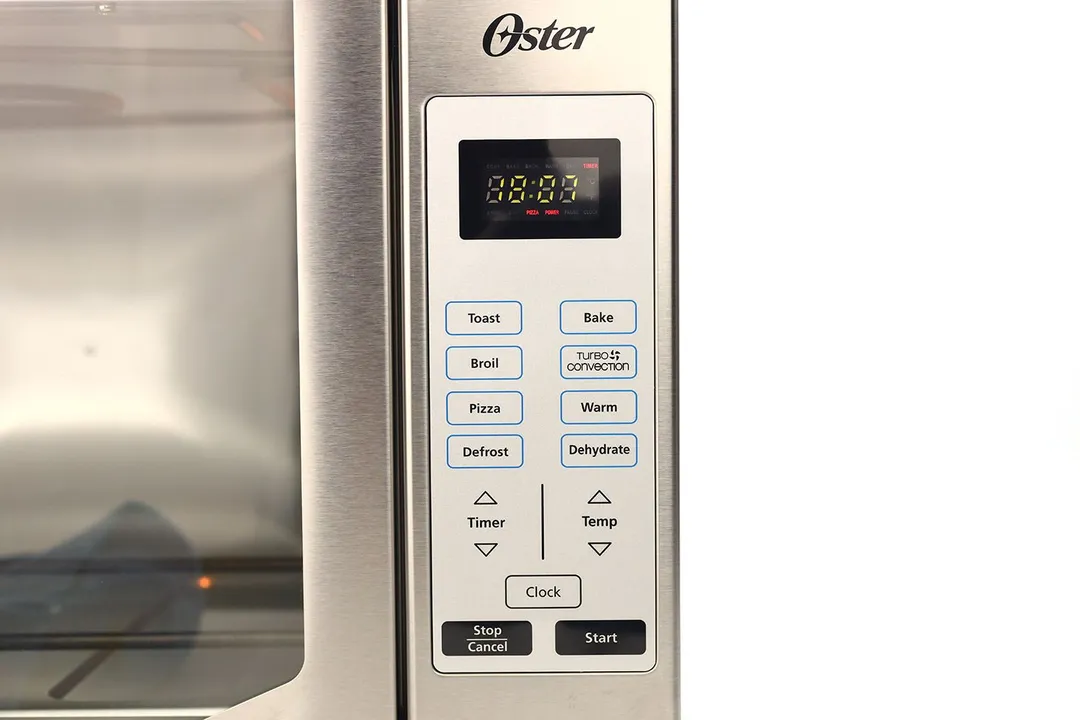
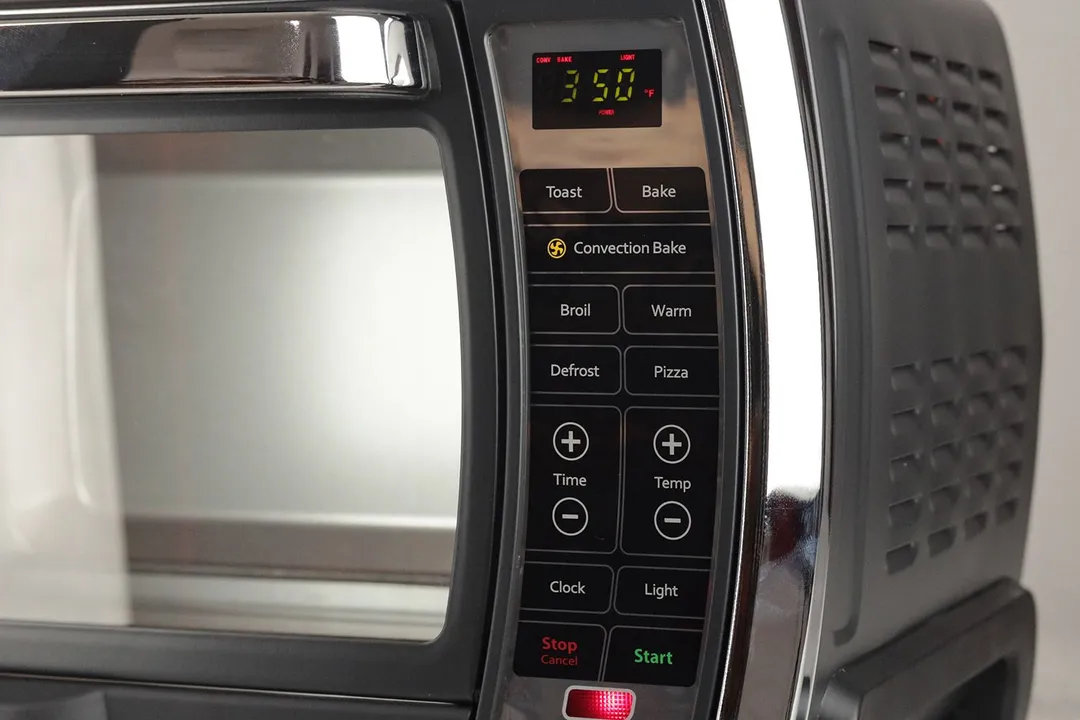
Cooking Functions
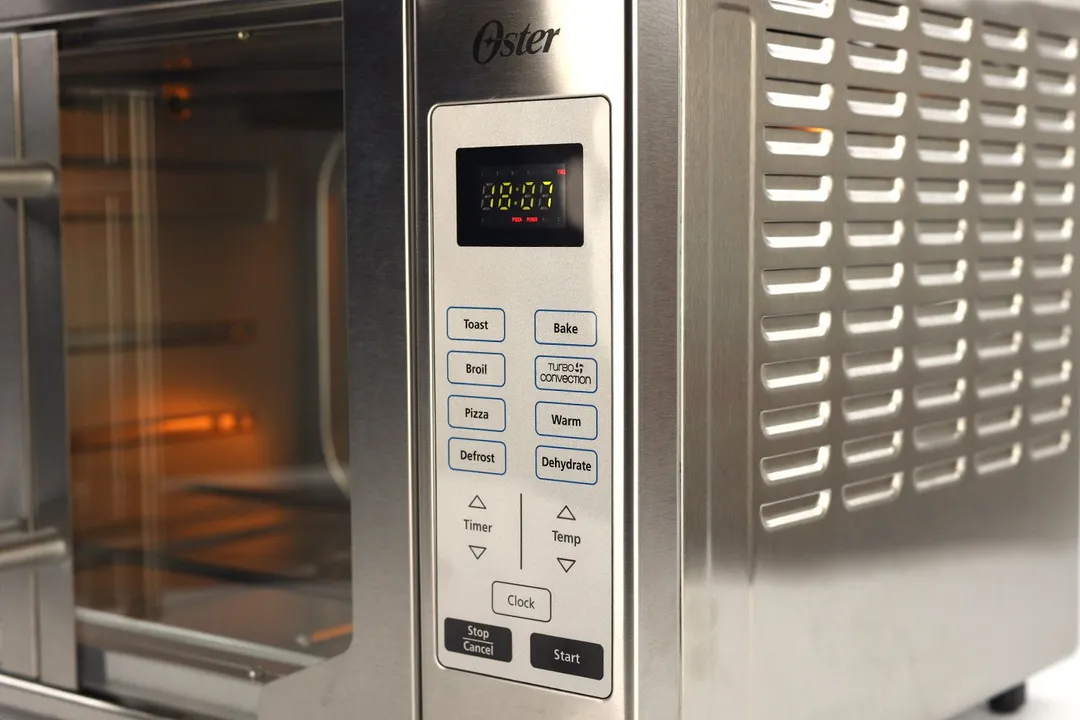
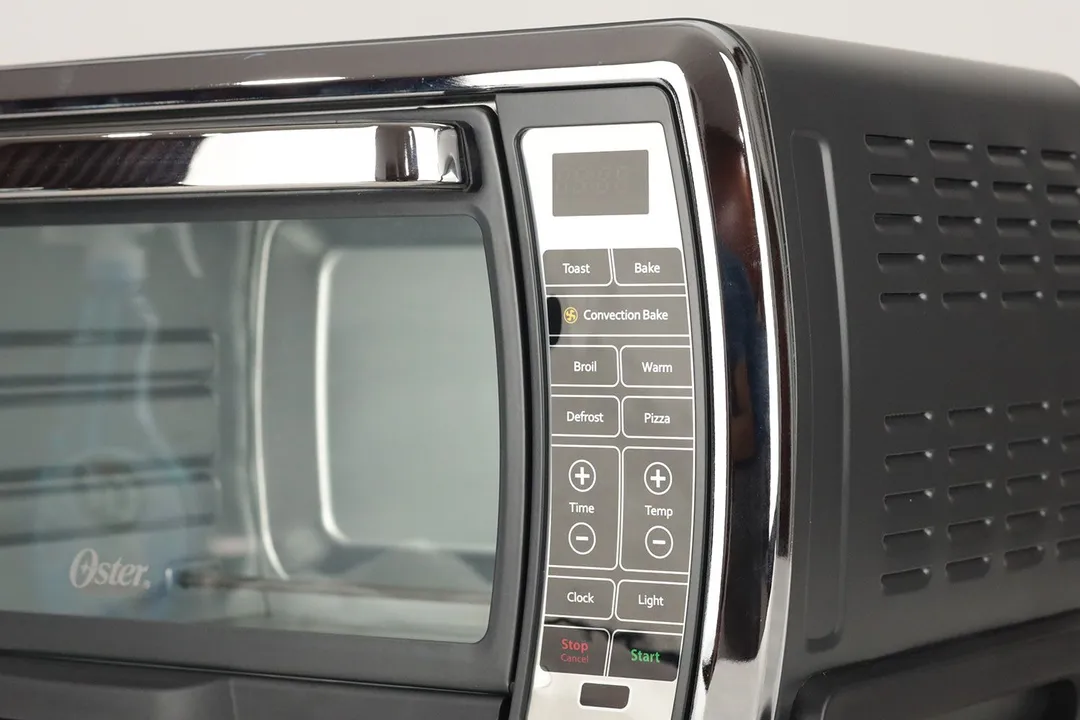
Interior
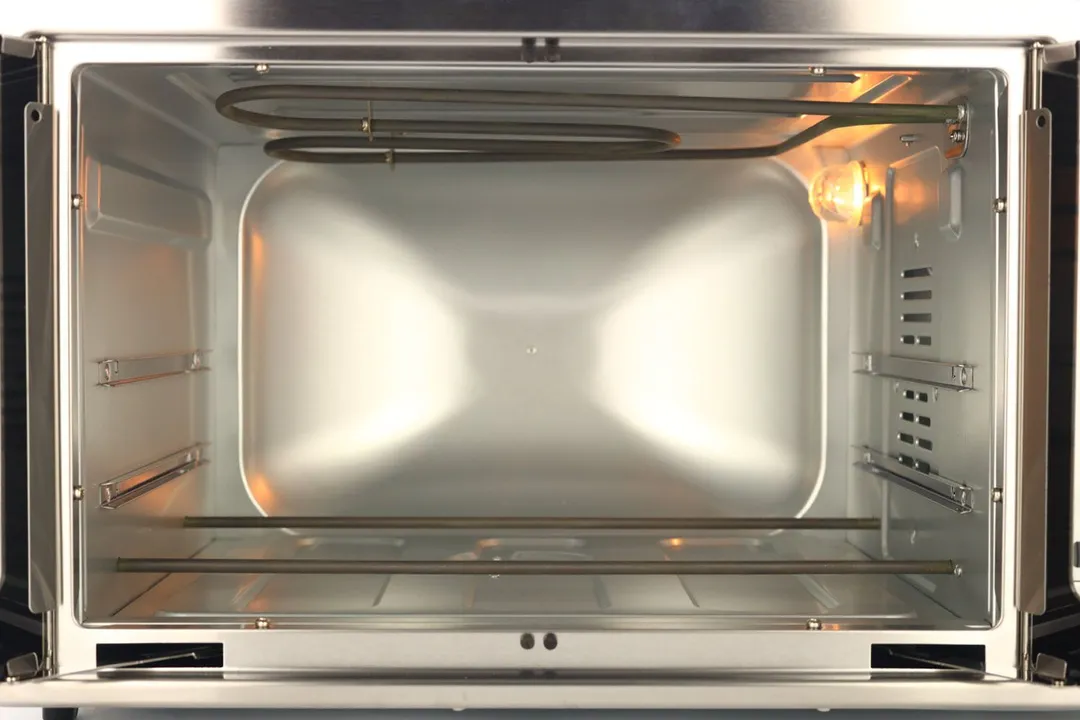
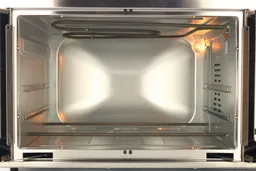
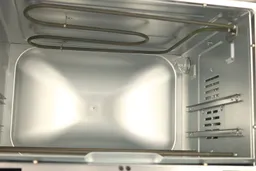

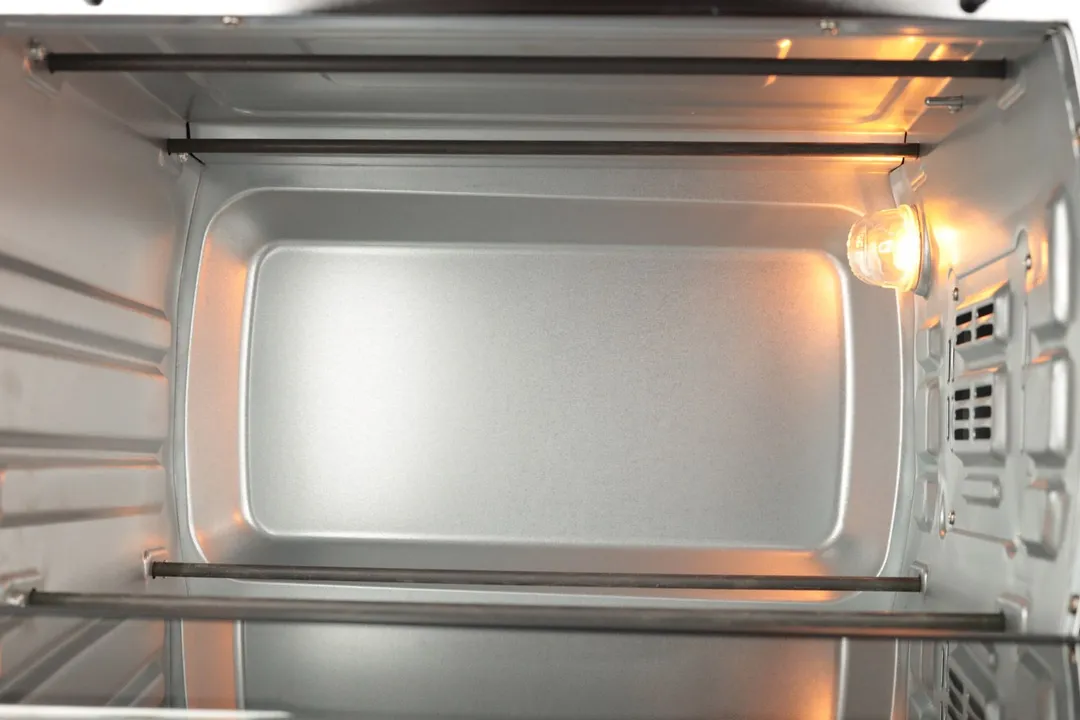

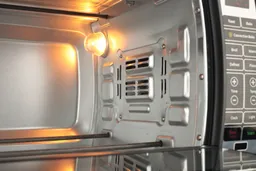
Power Cord
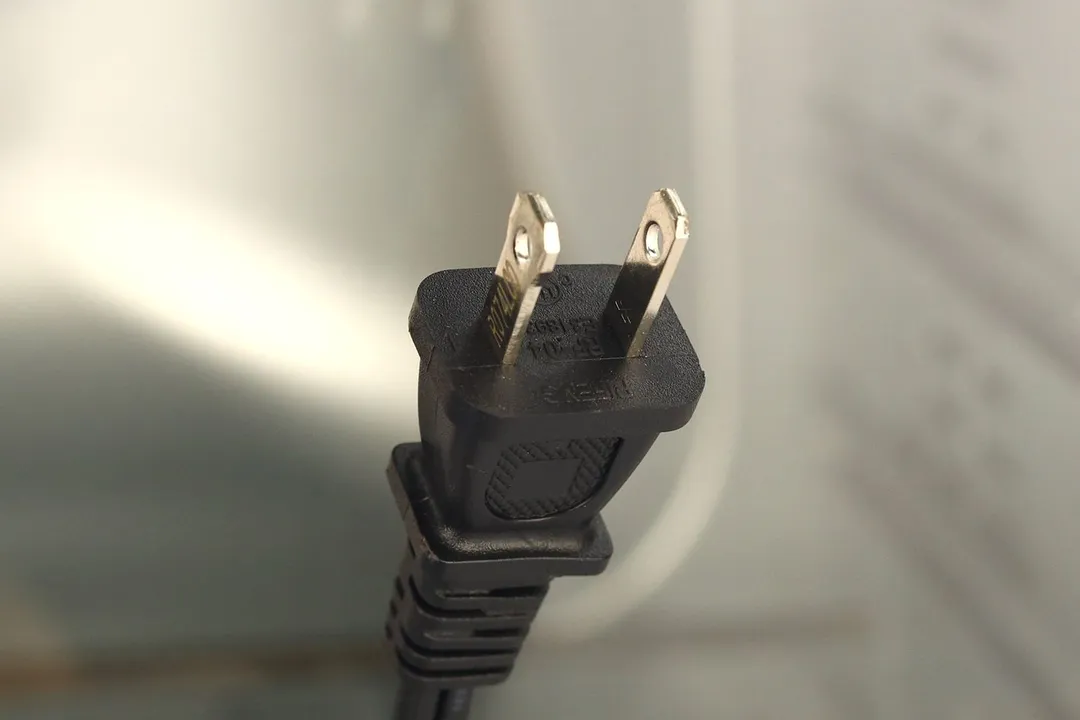
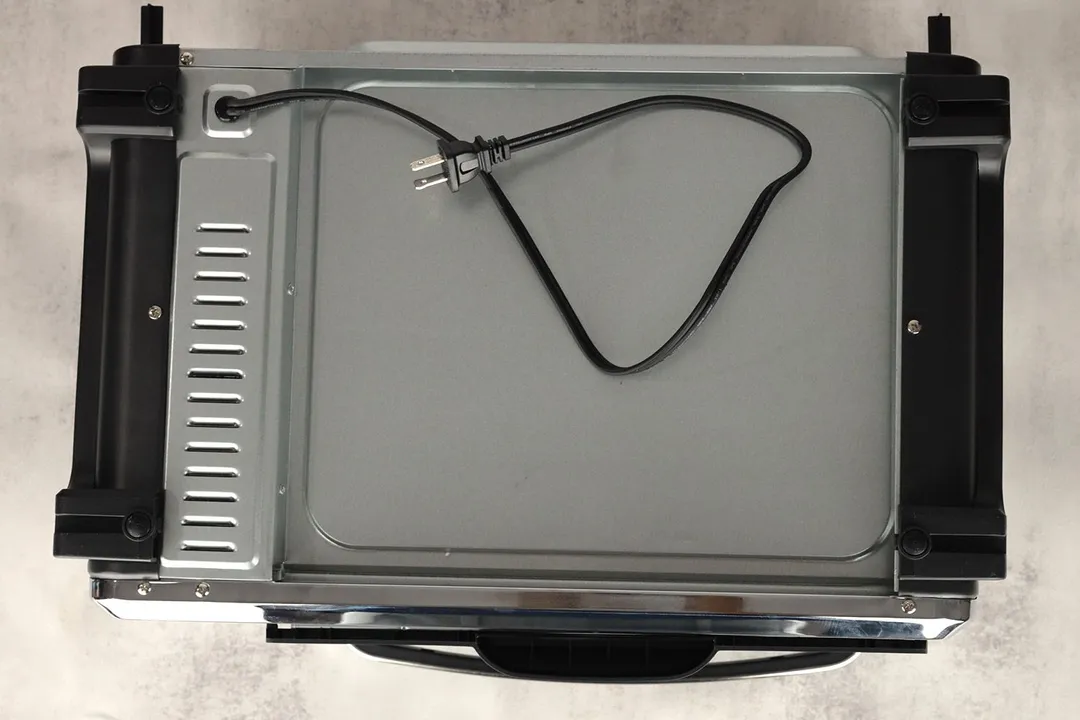
Accessories

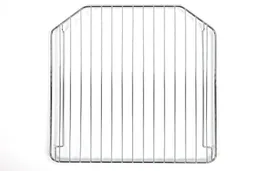
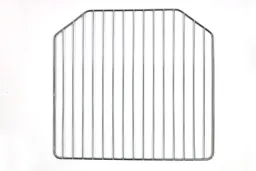
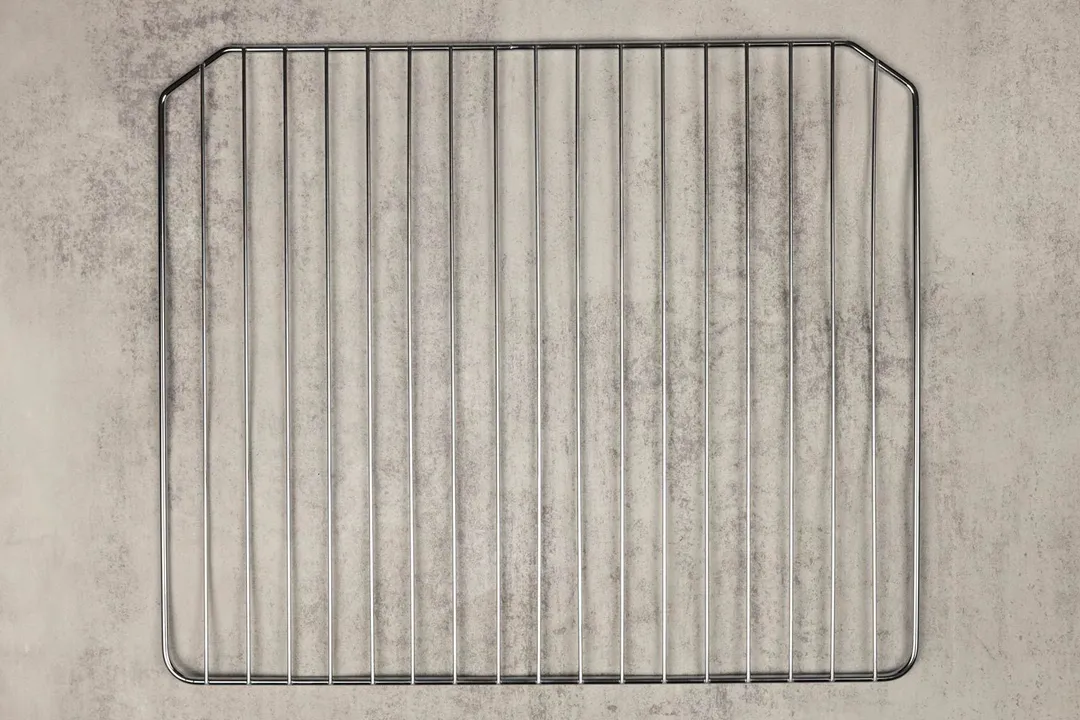
Build Quality
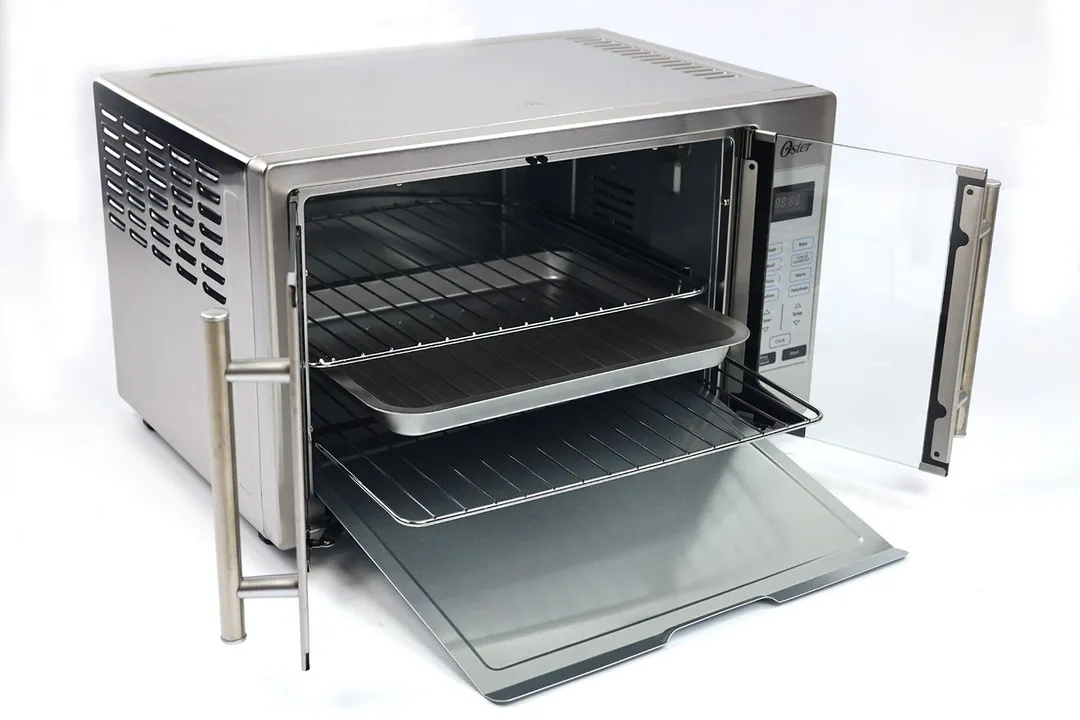
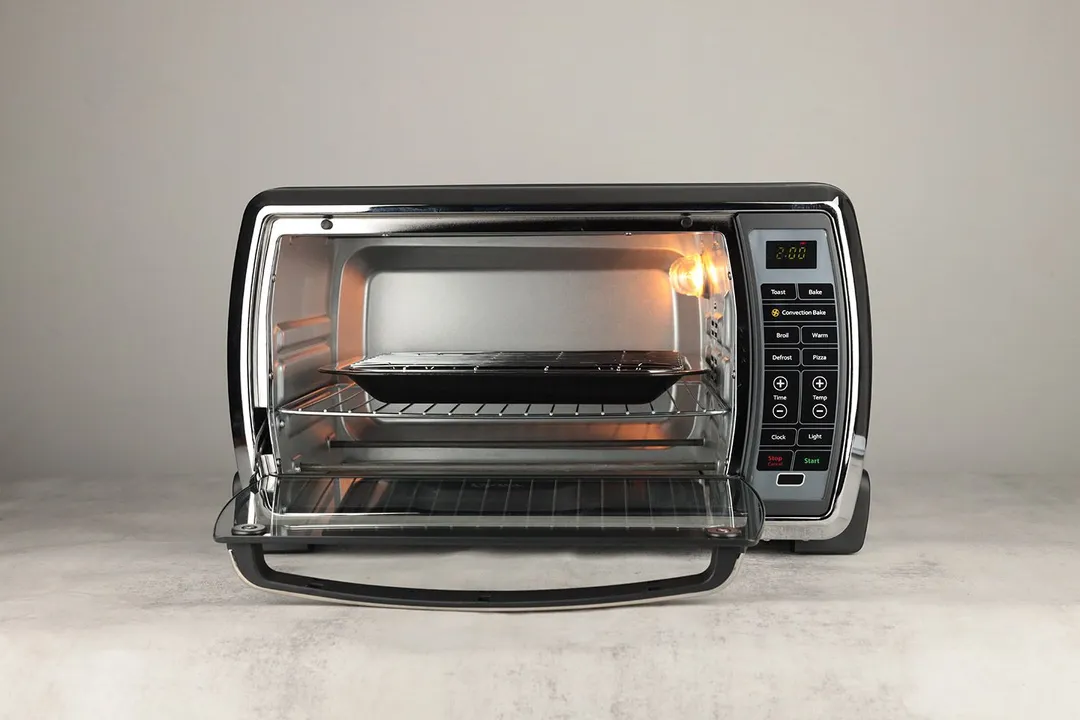
Capacity
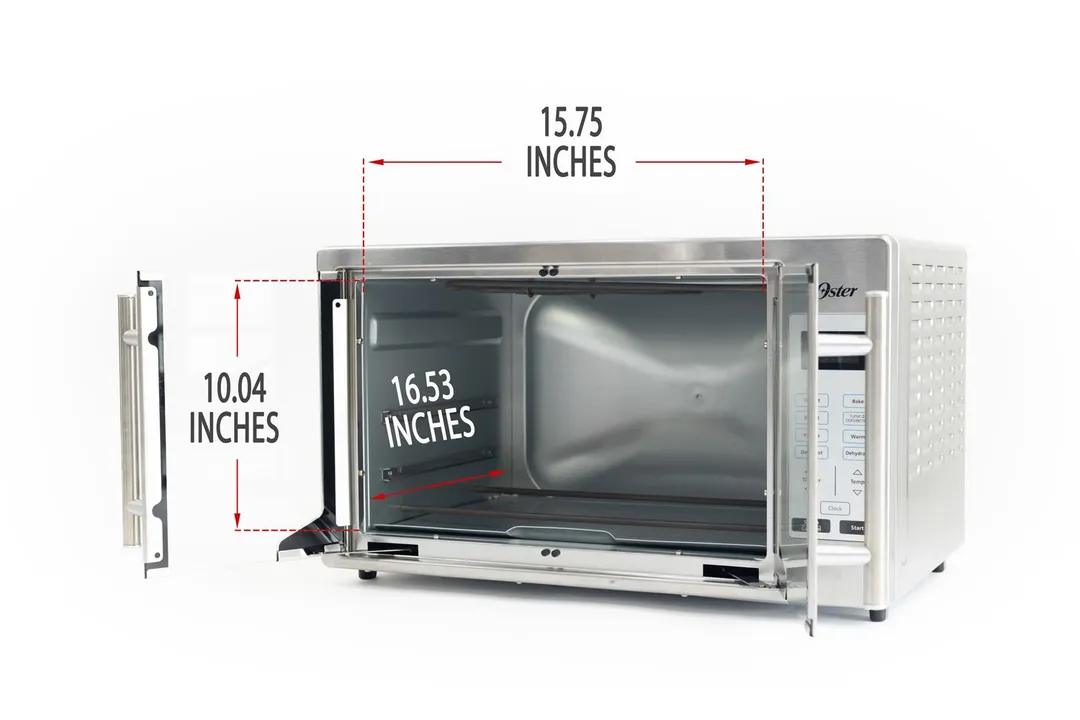
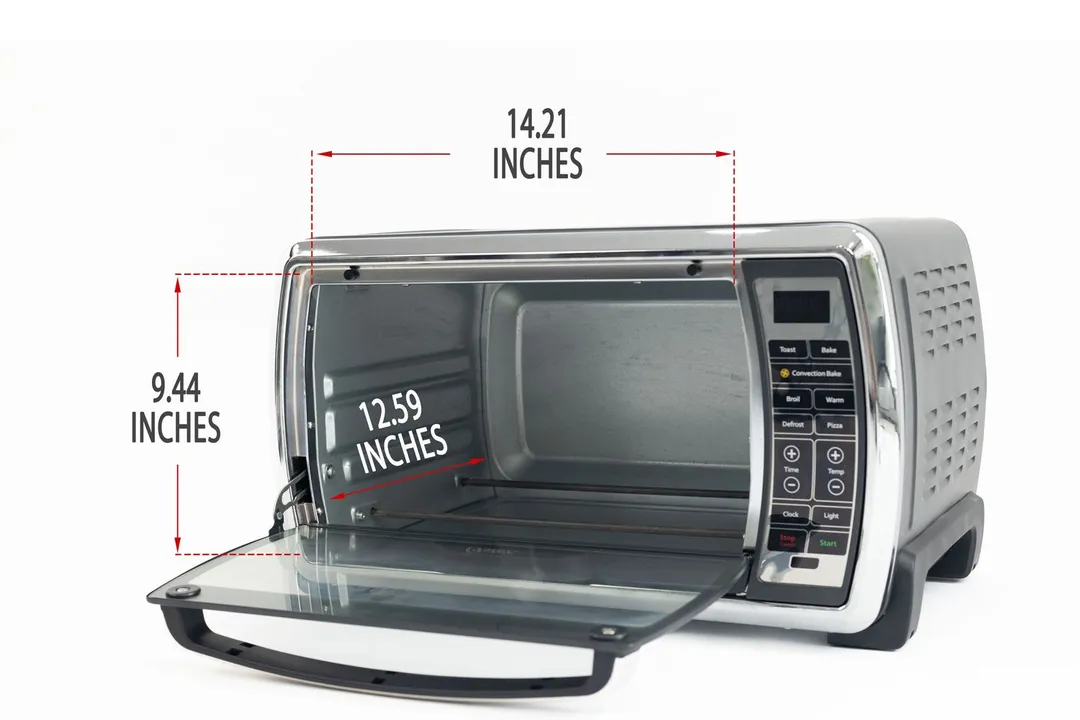
Usability
User Control
Ease of Use
Cleanability
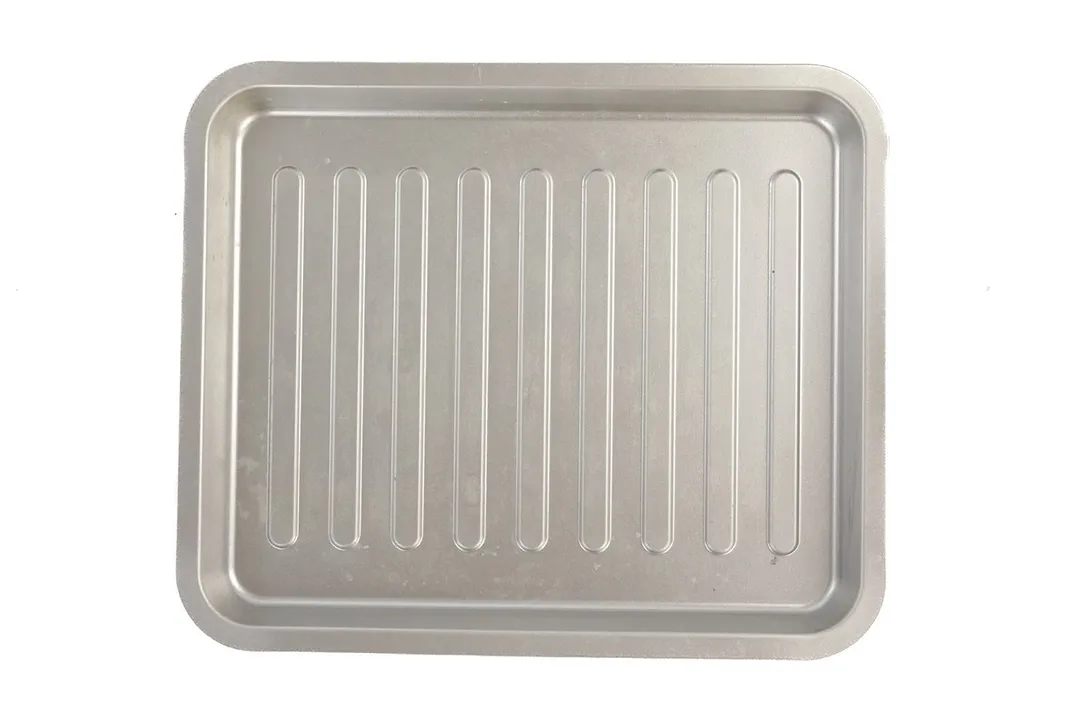
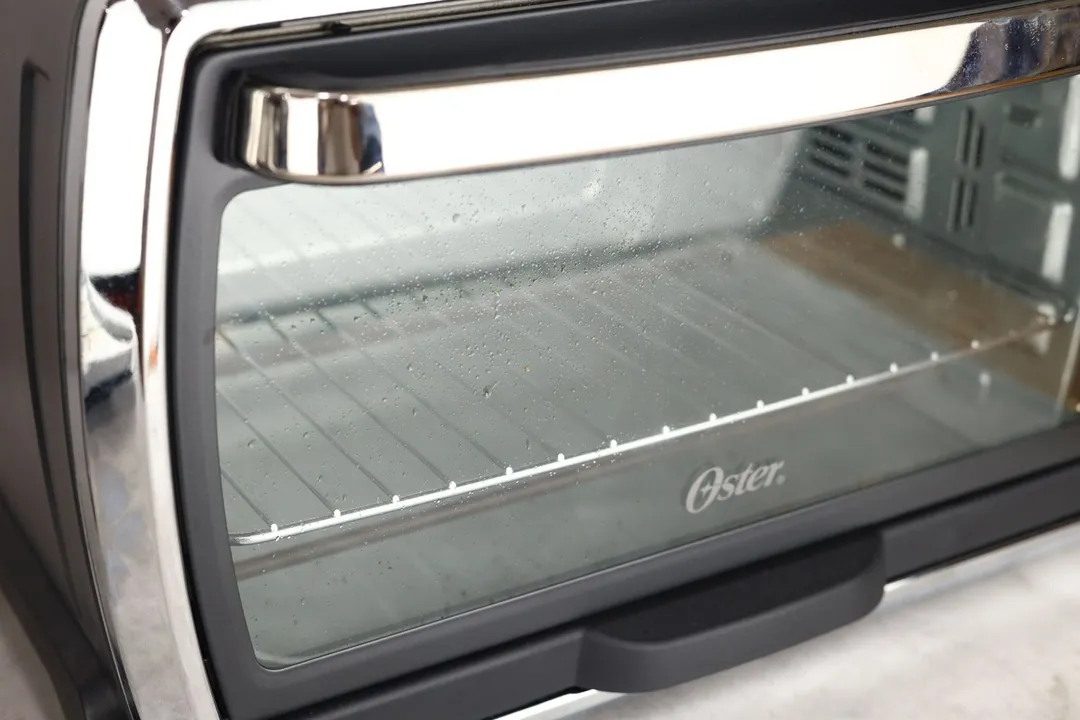
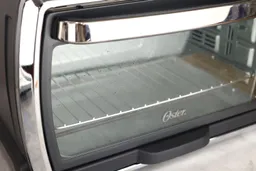
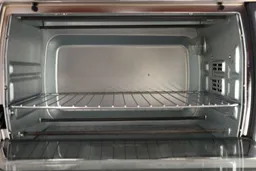
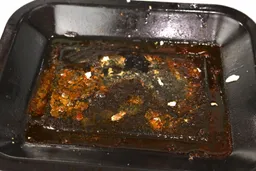
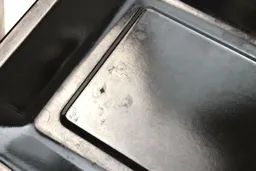
Behind the Comparison
Alan Nguyen is a writer and product reviewer at HealthyKitchen101. His major in English language teaching taught him to present concise information. In addition to his cooking hobby, he values the practical aspects of household appliances.
Lap is Head of the Research, Testing, and Review Team (RTR Team) at HealthyKitchen101.com, where he directs and supervises the testing of kitchen gadgets and appliances.
Tuyet Pham is an award-winning Saigonese chef passionate about delicious and healthful foods. At HealthyKitchen101, she develops recipes and collaborates with our Research, Testing, and Review lab to evaluate the performance of cooking appliances. Her assessments add a strong authoritative voice to our product scoring process.
Nguyen Ntk is a graphic designer, photographer, and videographer whose philosophy centers around respecting and celebrating the beauty of reality. Through his lenses, Nguyen strives to capture the true essence of objects and events, showcasing and highlighting authentic features without distortion or exaggeration.




